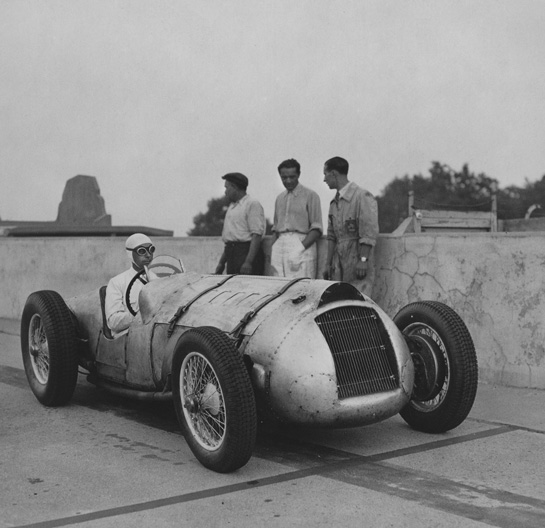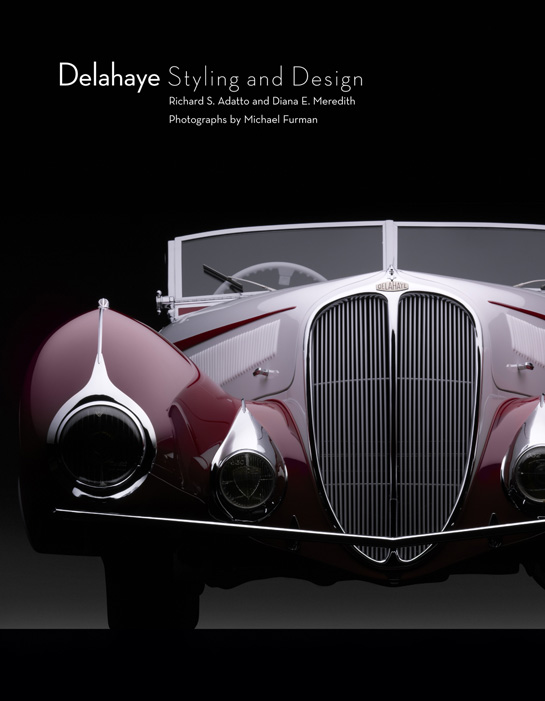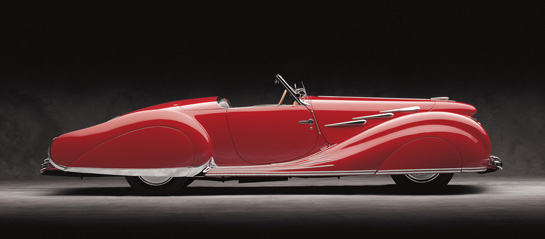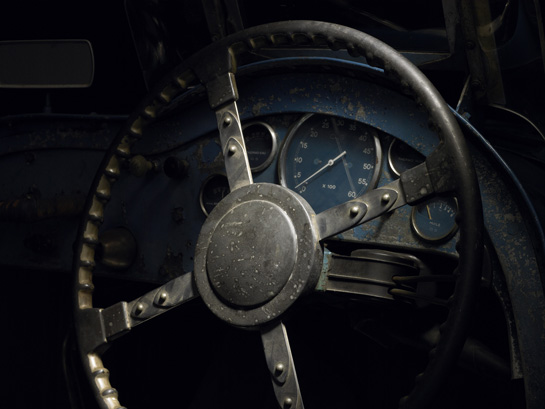DELAHAYE STYLING AND DESIGN
By Richard S. Adatto and Diana E. Meredith
Dalton Watson Fine Books
With historic photography from multiple archival sources
Color portraits by Michael Furman
Review by Larry Crane
Émile Delahaye was a graduate mechanical engineer from Arts et Métier College of Angers, class of 1869. He soon owned his own foundry in his hometown of Tours at the age of 36 and was developing a line of internal combustion engines in 1879. He raced one of his own automobiles in the 1896 Paris-Marseilles-Paris contest, took in two partners, Georges Morane and Léon Desmarais, to capitalize the growing business in 1897, and retired from Société E. Delehaye et Cie in 1901, just as the automotive century began. Management of the works fell into the hands of Charles Weiffenbach (for ever known as Monsieur Charles) who must be given credit for the great Delahayes of the new century.
Richard S. Adato and Diana E. Meredith, with the support of a worldwide network of marque enthusiasts and archivists including The Peter Mullin Automotive Museum Foundation and its chairman, Peter Mullin, have published a thoughtfully brief treatise on Delahaye history as a baseline for a volume on the best of French automotive design. The chapters begin with profiles of each of the primary coachbuilders: Figoni et Falaschi, Jacques Saoutchik, A. Guilloré, Carrosserie Franay and Henri Chapron; before documenting individual chassis number histories with divided focus on the original owner, his coachbuilder’s order and the car’s subsequent ownership histories and experiences. Each design is illustrated by historic black and white images and fabulous Michael Furman photography.

Dreyfus with the V12 Delahaye at the start of the Prix du Million in 1937. At left behind the car, with his hands in pockets is Robert Benoist to observe the event for Bugatti.
There are 16 examples of the Types 135, 135 M and 135 MS road cars ordered by international celebrities like Aga Kahn who asked that the wild two-tone auto show color scheme be removed and the entire car painted glossy black before he took possession. One of our favorite stories is more recent. The fantastic fully-skirted Figoni & Falaschi (arguably Geo Ham inspired) ivory and blue roadster was exhibited at the 1939 New York World’s Fair. A young Malcolm Pray was with his father when he saw the car. Love at first sight. Ten years later he saw it on a used car lot in Connecticut and realized it had entered his world and would be available when he was ready. It became his in 1964 and is complete restoration was completed in 1968. It became his sports car, and continues to be his favorite in a growing collection. It has been an award-winning star in concours around the world and continues to be on the road more often than one might expect. It is Malcolm Pray’s lifelong love after all.
A chapter called “ Delahaye on the Racetrack” gives a succinct dossier of a few victories and many near misses that included 5 or 6 cars in the top ten for many events. While victories required brilliant drives from René Dreyfus or Lucy and Laury Schell with their Ecurie Bleu, the large number of French privateers proved the Delahaye strength and reliability. The stories are repeated of Lucy Schell funding racecar development; first by ordering 12 135 S roadsters—6 for her own team and the others for her friends—then funding completely the 4.5-liter V-12 Type 145 design and development. Dreyfus was actually able to beat the German Silver Arrows for the national Million Franc Prize and again at the Grand Prix at Pau in the same car. Furman portraits of two Types 135 S racing cars show one from the Mullin Collection perfectly restored, and, incidentally, a regular competitor in vintage races, and an unrestored car kept safely in Dr. Fred Simeone’s historic race car collection.
The most confusing—and compelling—pair of features unfold the convoluted histories of Type 165 V-12 racing chassis number 60743 and 60744. They will demand several readings to become comfortable with intertwined tales of coachbuilders, owners, world history, and the law. These chapters conclude well as both of these exciting—and nearly identical—coupés now set nose to tail in the Peter Mullin Automotive Museum for all to ponder and enjoy.
This is not a comprehensive marque history, though it offers considerable detail carefully organized. It is a beautifully crafted coffee table celebration of the fine art of French automobile design and coachbuilding between the wars, as created for the sporting Series from Delahaye.



Thanks for the insider details, Larry. Fascinating facts about fascinating cars.
Rog Patterson
I love automobiles as art. A former boss Dan Harmer once told me, “It doesn’t cost a penny more to design a beautiful car than it does an ugly one.” WOW! My dad was into cars, and I’m told I often sat in his friend’s Delahaye which was stored in the big garage when I was too young to remember it, grabbing the steering wheel and steering it through imaginary roads. So something MUST have taken hold early on in my mind. A few years later, a doctor moved in a few houses away, when I WOULD remember it, and I was a goner. His car was an ice lime green Lamborghini Miura. A space ship in the neighborhood! Many of us grade school boys would just stand there and gawk at it, as it squatted, low and lean, parked at the curb in front of his house. I would stand there for 10 minutes, looking at it from every angle possible. Ever since I started driving, there has always been a stylish, although much less expensive Italian car in my possession, and to think it all started with a Delahaye in my dad’s garage…